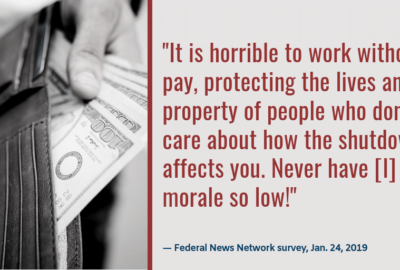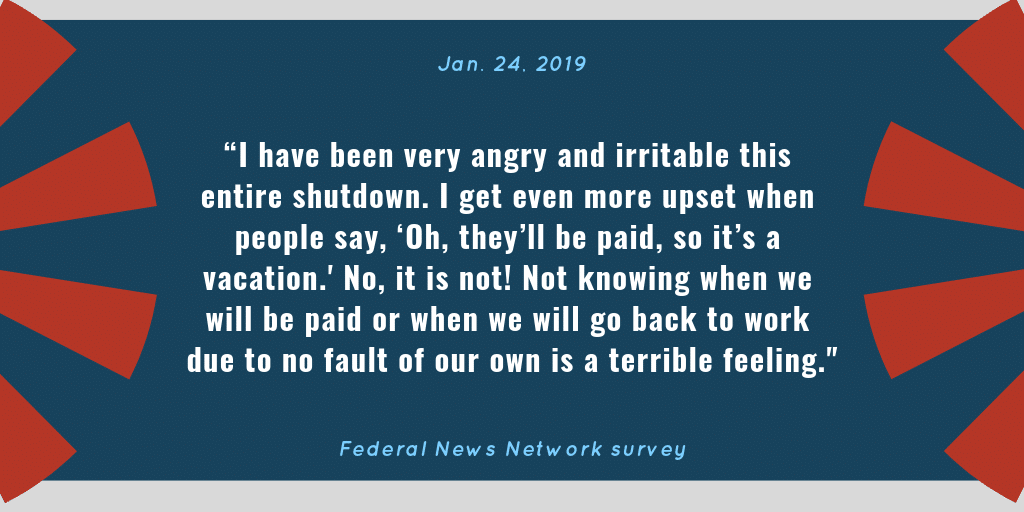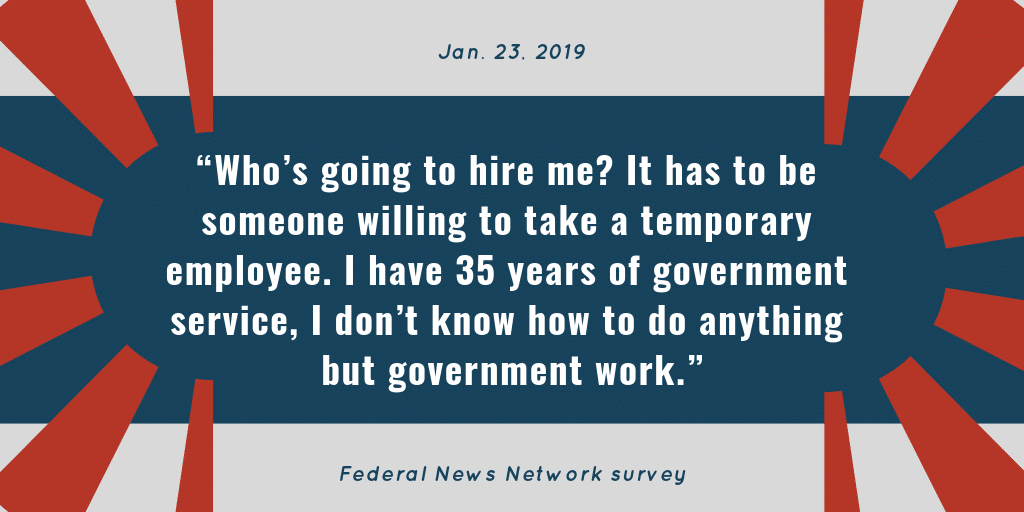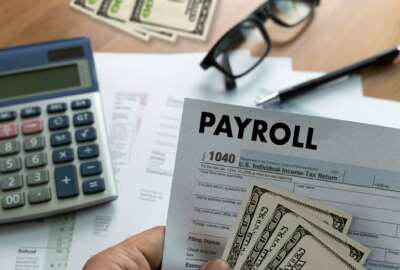

Two weeks out from the threat of another partial government shutdown, impacted federal employees are still trying to recover from the 35-day lapse they just...
Best listening experience is on Chrome, Firefox or Safari. Subscribe to Federal Drive’s daily audio interviews on Apple Podcasts or PodcastOne.
Two weeks out from the threat of another partial government shutdown, impacted federal employees are still trying to recover from the 35-day lapse they just endured.
Federal News Network received responses from more than 1,000 furloughed employees, excepted workers and contractors. Of those, just over 500 respondents identified themselves furloughed during the government shutdown.
A third of furloughed feds who took the survey said they applied for unemployment benefits, despite having to pay those benefits back now that the shutdown has ended.

Another 29 percent took advantage of the furloughed-fed discounts restaurants and coffee shops in the Washington metro region offered to help bring in more customers. Another 21 percent said they applied for loans to help pay bills during the shutdown.
More than 7 percent sought assistance from local food banks — some of which set up “pop-up markets” during the shutdown.
One furloughed respondent signed up for Supplemental Nutrition Assistance Program (SNAP) benefits, a program the Agriculture Department went to great lengths to keep running during the shutdown.
Some excepted employees who took the survey expressed some resentment with their furloughed colleagues, complaining that the shutdown amounted to a “free vacation.”
However, some furloughed employees — especially those without enough savings to weather two missed pay periods — bristled at the notion that the shutdown was a vacation.
“I have been very angry and irritable this entire shutdown. I get even more upset when people say,
‘Oh, they’ll be paid, so it’s a vacation.” NO, IT IS NOT! Not knowing WHEN we will be paid or
WHEN we will go back to work due to NO FAULT OF OUR OWN is a terrible feeling, ” one furloughed respondent wrote.
However, those with savings or emergency funds generally didn’t mind the time off during the shutdown. One furloughed fed built up enough savings to “last a few months” after the 1995-96 government shutdown.
“For those who have built up savings this shutdown is a free vacation,” another employee wrote.

Very few furloughed federal employees — only 5 percent — took side jobs or “gig economy” work, but more than 40 percent of respondents thought about looking into it.
Several respondents signed up to fill in as substitute teachers. However, some higher-grade employees faced more restrictions with taking temporary jobs.
“As a lawyer in the federal government, I am limited in the kinds of temporary work I could get
while on furlough,” one respondent wrote.
Another federal employee described working in “an extremely remote area,” where non-government jobs weren’t available within a two-hour drive.
Others expressed doubts over whether anyone would hire furloughed employees, knowing they could be called back to work at any moment.
“Who’s going to hire me? It has to be someone willing to take a temporary employee. I have 35 years on government service, I don’t know how to do anything but government work.”

Of all the stresses of the shutdown, 45 percent of respondents said uncertainty over the length of their furlough status made them the most uneasy. A close second — 38 percent —said not getting paid on time was their biggest frustration.
More than 12 percent said they were most concerned about not being able to carry out their responsibilities at work.
“The delay in getting work done has already cost the taxpayers valuable data,” a research scientist wrote. “Even a few more weeks will set projects back a full year.”
More than half of furloughed feds — 52 percent — said their spouse or significant other worked in the private sector, and was still earning a paycheck.
Another 10 percent of respondents said their spouse or significant other was also furloughed as a result of the shutdown.
“We have gone through four rounds of cutting expenses with each new week that has passed,” one respondent wrote, adding that their partner was also furloughed. “We’re now to the point where there is nothing more to cut, unless we begin to do without things we currently consider necessities.”
Less than 3 percent said their partner was an excepted employee working without pay, and 33 percent said there were single.
A majority of respondents — 62 percent — ranked “getting reimbursed for pay, benefits, etc.” as their top priority after the shutdown ended. Most federal employees impacted by the shutdown received back pay this week for the two pay periods missed during the shutdown.
However, one respondent remained concerned for low-wage service contract employees — cleaning staff, janitors and mailroom workers — who have no guarantee of back pay.
“This is a horrible situation for them especially,” the respondent wrote.
House and Senate Democrats renewed their push this week to ensure that contract employees also receive back pay.
One bill, introduced by Sen. Tina Smith (D-Minn.) caps reimbursement for contract employees making $50,000 or less a year — equivalent to 200 percent of the federal poverty line.
Graphics by Federal News Network’s Amelia Brust
Copyright © 2025 Federal News Network. All rights reserved. This website is not intended for users located within the European Economic Area.
Jory Heckman is a reporter at Federal News Network covering U.S. Postal Service, IRS, big data and technology issues.
Follow @jheckmanWFED


